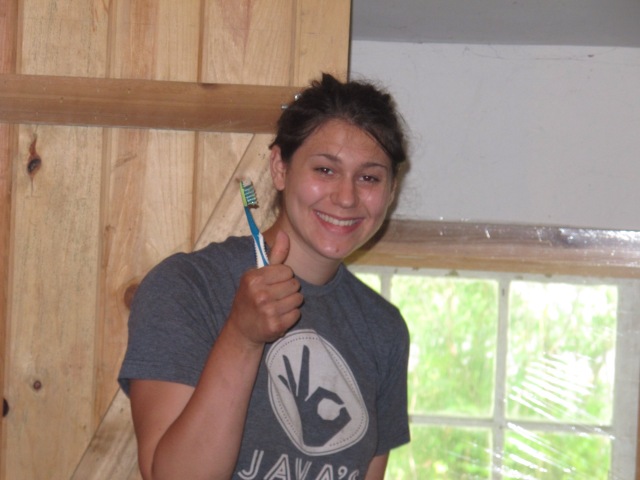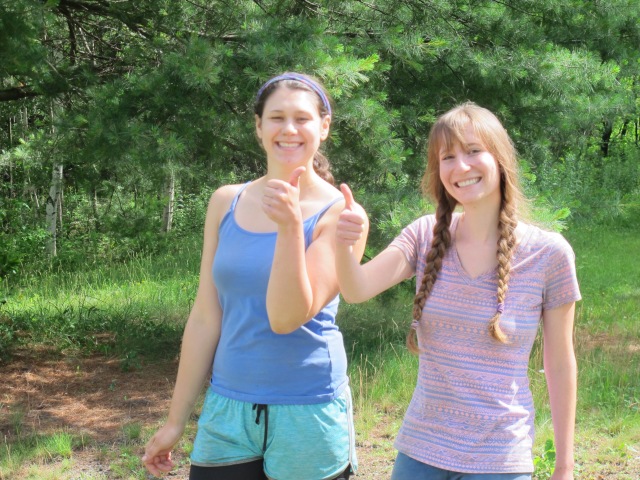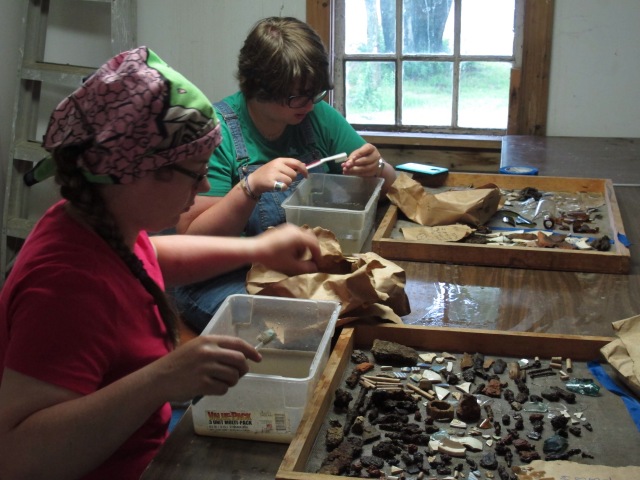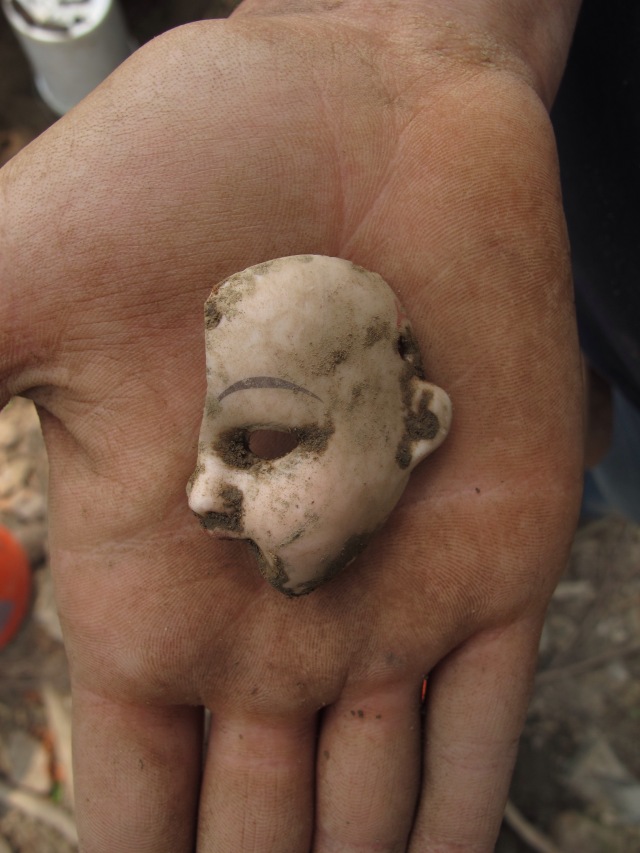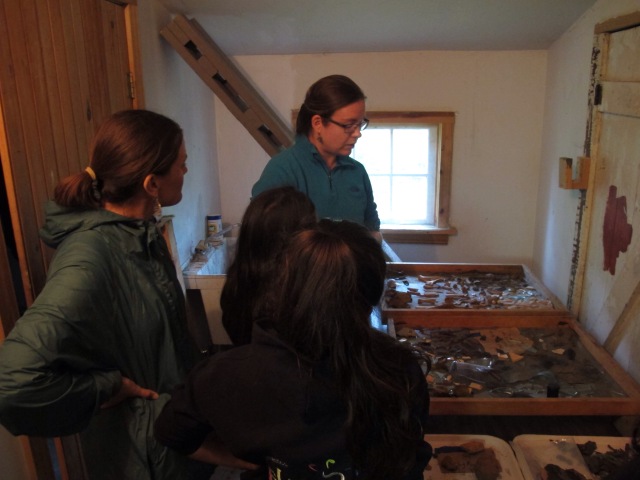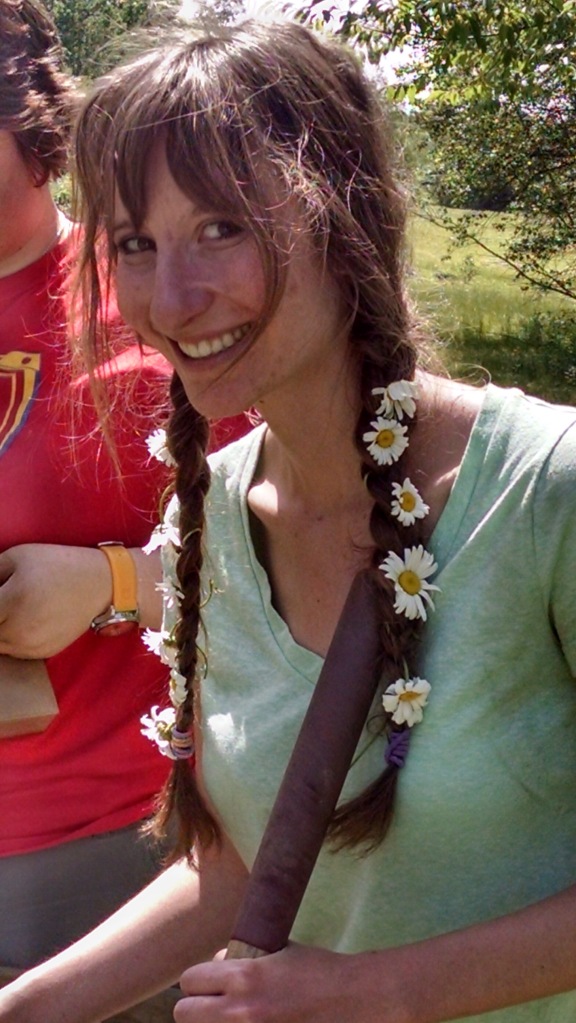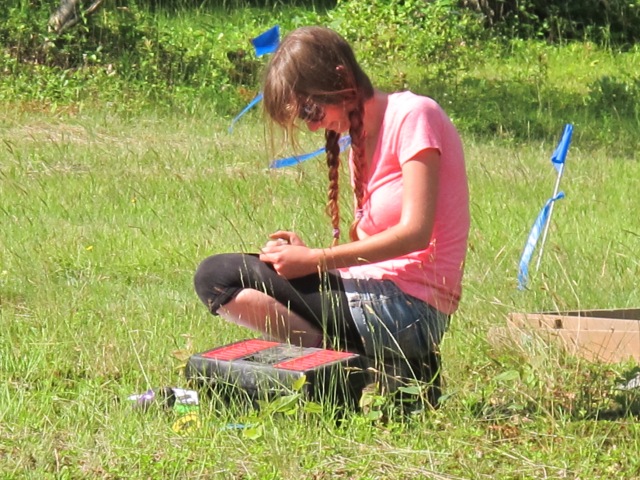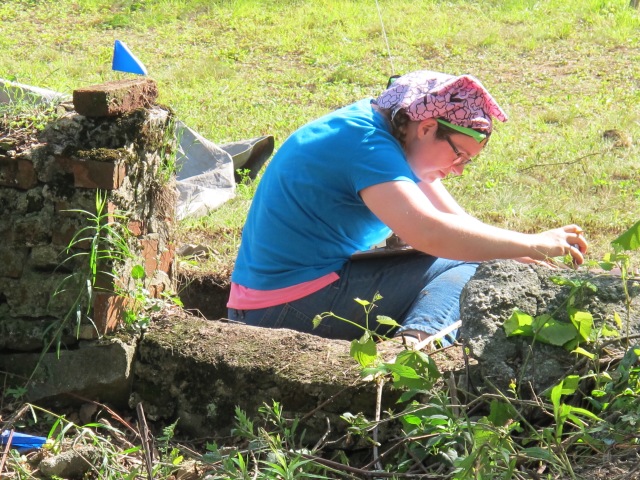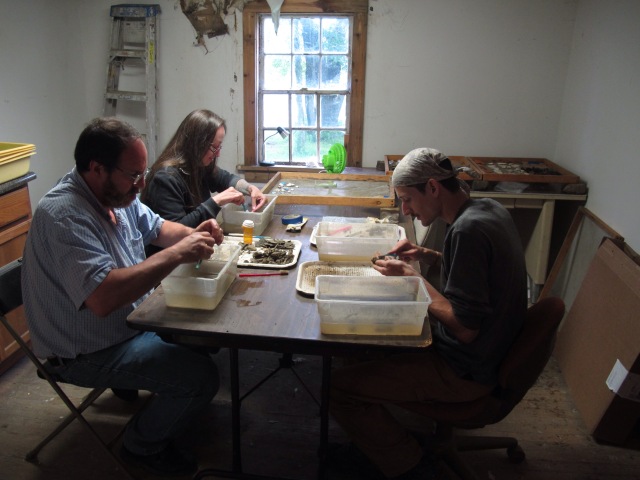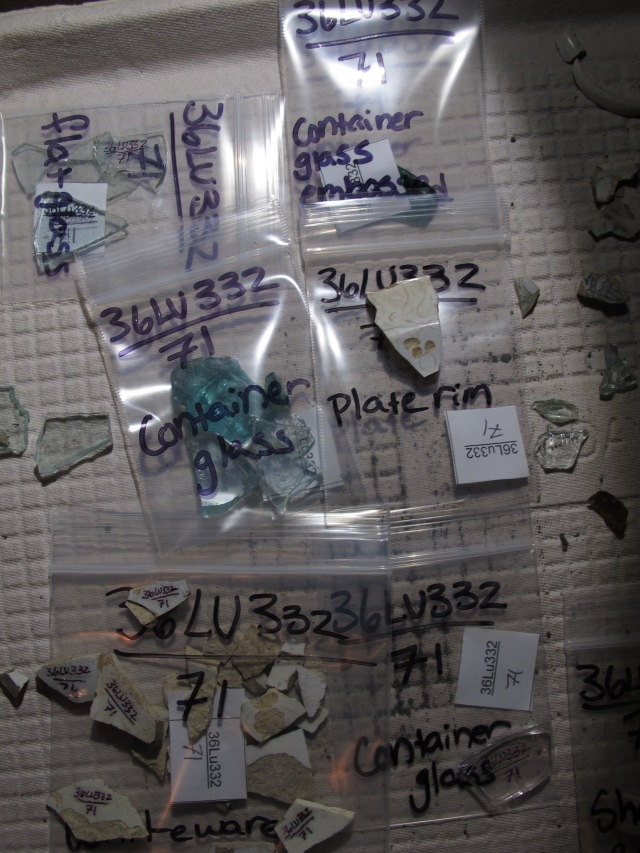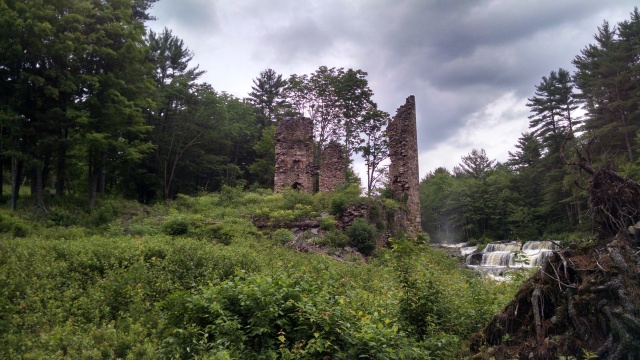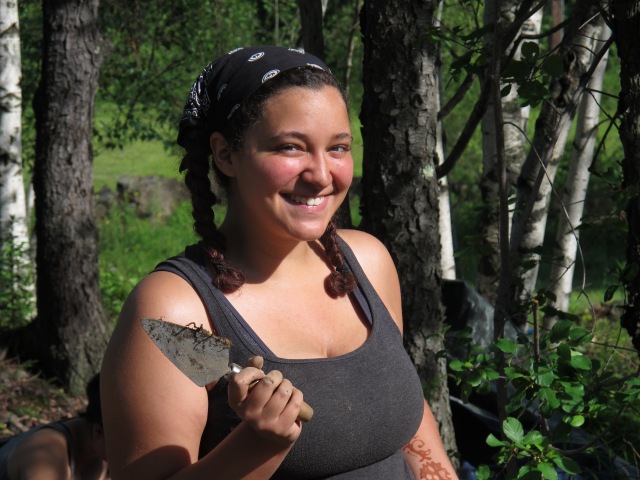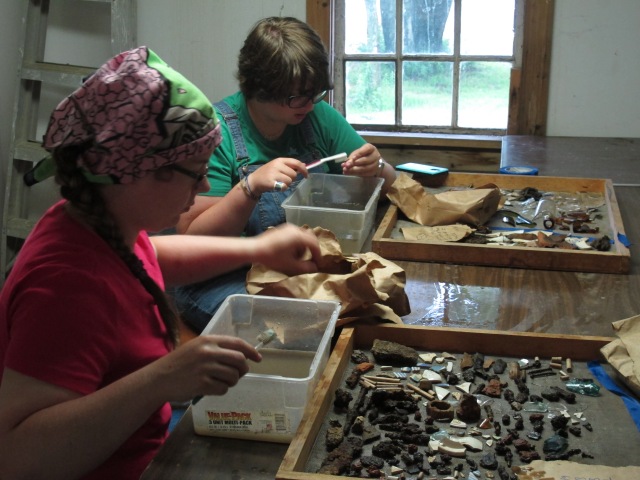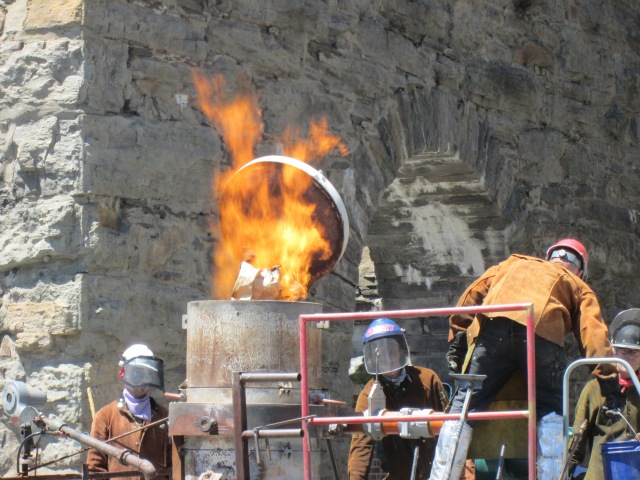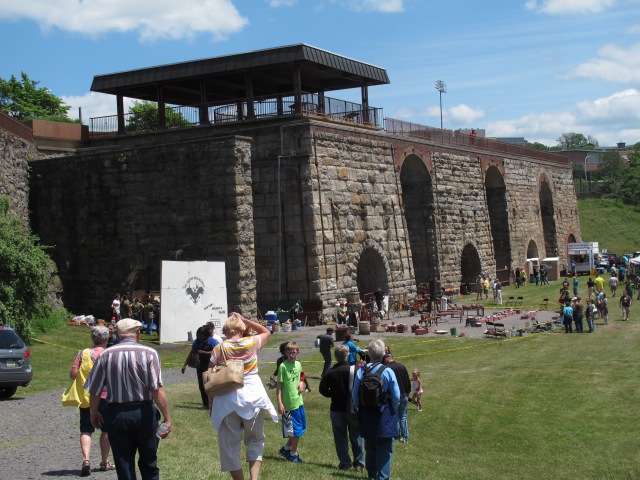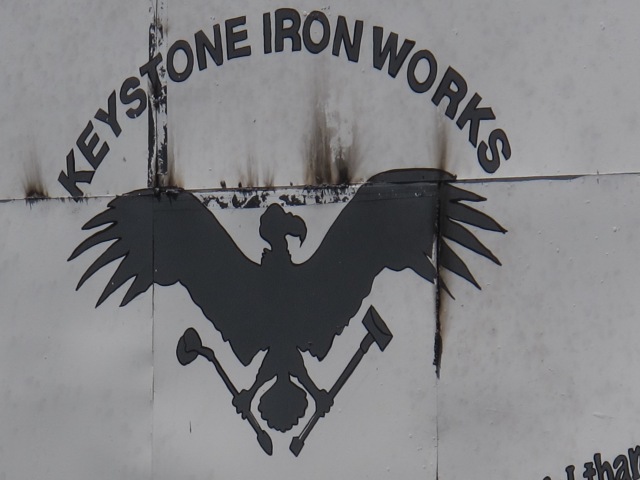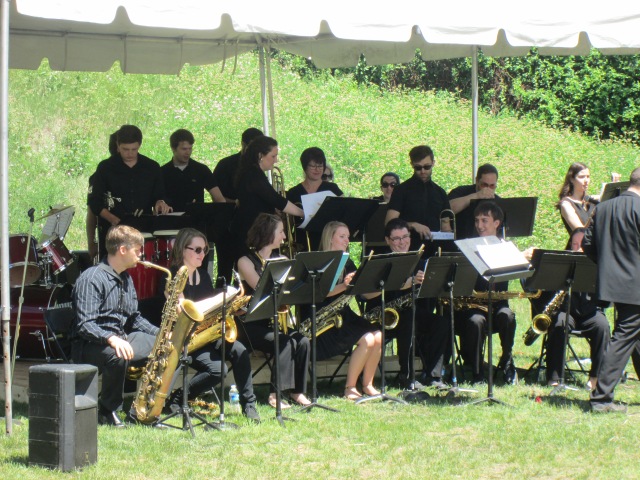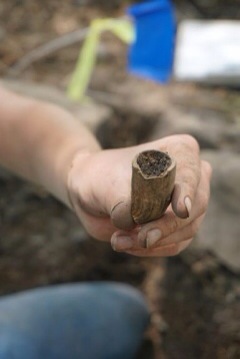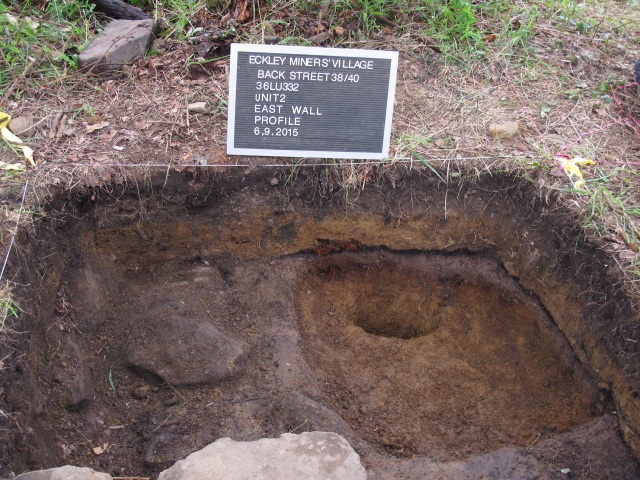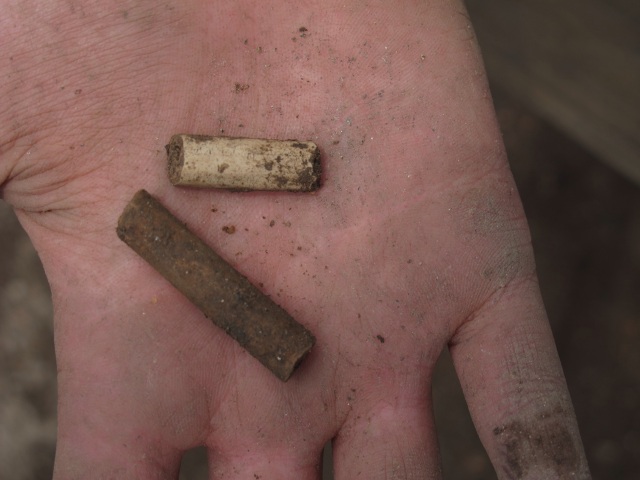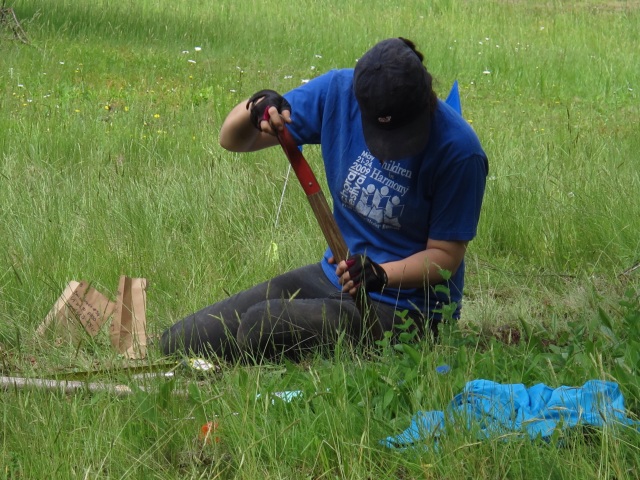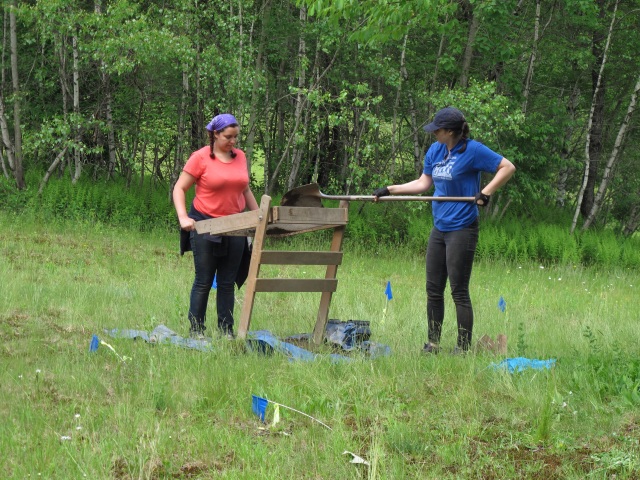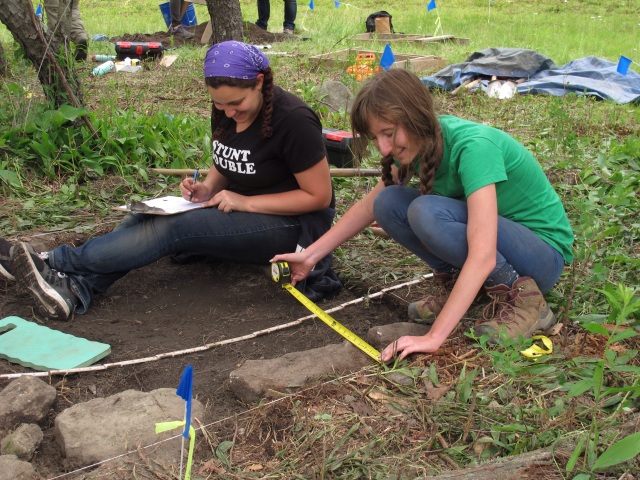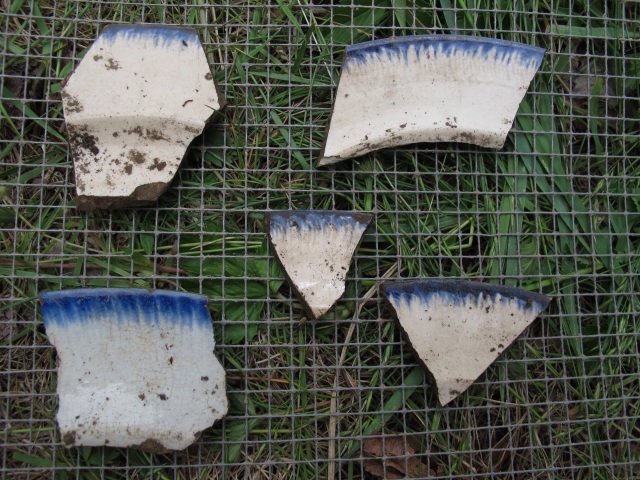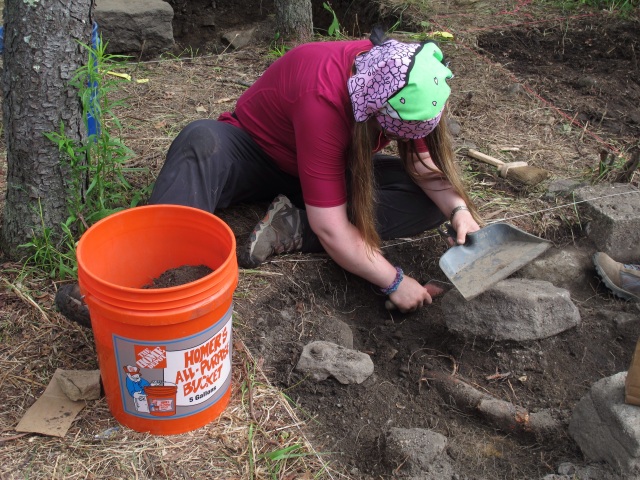
Crew member Esther excavating at the Back Street site, Eckley Miners’ Village
The Department of Anthropology at the University of Maryland is delighted to report the completion of our first two weeks of excavations at Eckley Miners’ Village! After much consternation about whether the project would move forward, our first few days in the field confirmed that all the effort on behalf of so many was completely worth it. Read on!
The Site
This is our fourth University of Maryland archaeological field school to be held in Northeastern Pennsylvania and we couldn’t be happier to return to the Greater Hazleton area. After many wonderful years in Lattimer and Pardeesville (Lattimer 2), we were sad to say goodbye but excited to expand our horizons to Eckley Miners’ Village, a Pennsylvania Historic and Museum Commission historic site that preserves anthracite miningheritage. Eckley is just a 15 minute drive from Hazleton, and we strongly recommend anyone in the area to check it out! Their website is http://eckleyminersvillage.com and you can find out about all of their upcoming events (including Patchtown Days!) through their facebook page at https://www.facebook.com/eckleyminersvillage
Eckley is a planned coal company town and so different areas of the village correspond to different economic classes of workers. This summer, we chose to excavate on Back Street – the location of the poorest workers in an area often referred to as “slate pickers’ houses”. These residences were double houses, with each side consisting of a one-and-a-half story balloon frame dwelling that measured 14-by-20 feet with an unattached summer kitchen located direct behind the house that measured about 13-by-10 feet. As many as 8 to 10 people could live in a house this size. (There is an excellent example of a standing slate picker’s house at Eckley that will be open duringPatchtown Days!)
The majority of the slate pickers’ houses were torn down in 1950s and the foundations removed through strip mining, but a handful of foundations remain. This summer’s work is focusing on house lot 38/40, although we hope to expand to other slate picker’s double houses on Eckley’s Back Street in the future.
The Crew
I would be remiss to not mention the students joining us on this field school! For these first few weeks we are joined by five undergraduate and one post-baccalaureate students from across the U.S. When we aren’t excavating, we are introducing them to just some of the local flavor, including Jimmy’s Quick Lunch, Carmen’s Bakery, haluptki, halushki, perogies, and Valley Hi, as well as some of the local sights. It’s been a cultural experience, to say the least! They have collectively decided that, as an all-female crew, it is only appropriate that they be called the Back Street Girls.

The crew gets a tour of Eckley Miners’ Village from site administrator Bode Morin
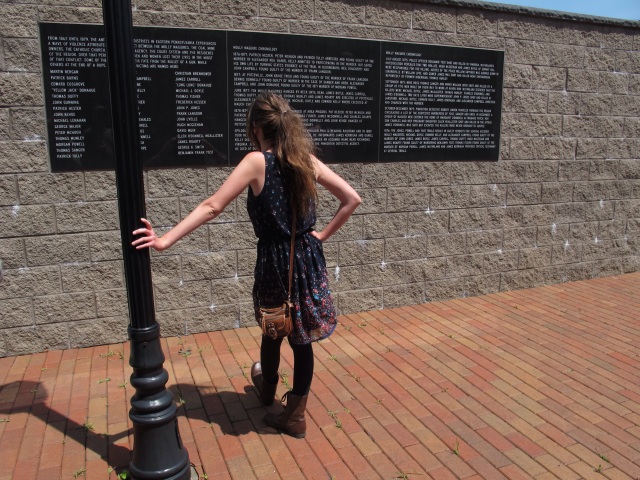
A visit to the Molly Maguire’s monument in Mahanoy City
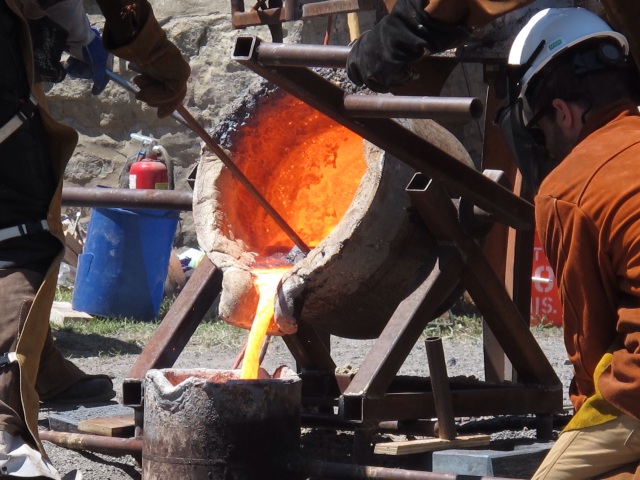
Iron pour at Keystone iron Works, Scranton
The Excavations
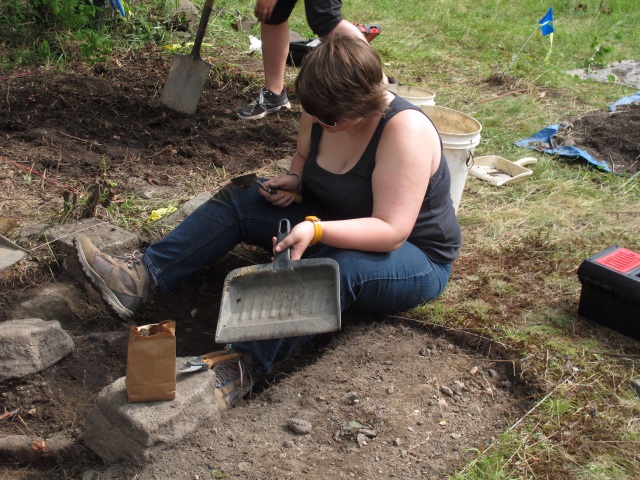
Andi excavating a test unit
In just two week’s we’ve become local celebrities! WNEP Channel 16, Scranton’s largest new station, came to the site on Wednesday to shoot a segment for the nightly news. That piece can be viewed at http://wnep.com/2015/06/10/digging-up-history/ . Locals who saw the news story have been contacting us about volunteering at the site and we couldn’t be happier! Many thanks to WNEP and Matt and Mike for coming out!
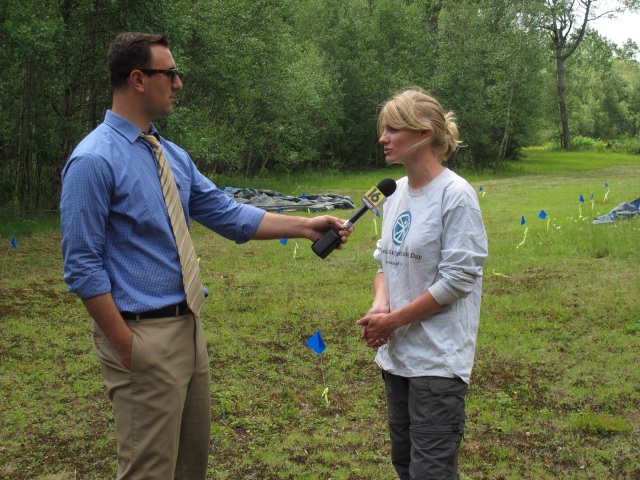
Camille being interviewed for WNEP News
The Artifacts
The most exciting part of this year’s field school (for me, at least), are the incredible artifacts coming out of the ground! For the first time since we began digging in Northeastern Pennsylvania, we are finding sealed stratigraphic contexts that go back as early as the 1850s! We know these houses were built in 1853, so our work is literally looking back to the people who first lived in Eckley. Annular banded, sponge decorated, cut sponge decorated, shell edged, hand painted, and transfer-printed wares are just a few of the awesome ceramics we’re recovering from these units. In addition to ceramics, a variety of other fascinating items are popping up, including a 1920s Lysol bottle, clay marbles, pieces of toy dolls, a thimble, and religious iconography, including a gilded porcelain wall crucifix and a (possible) crucifix pendant. All of these items help us to understand the lives of the people who lived in this section of Eckley – a history we hope to make more publicly accessible in the future.
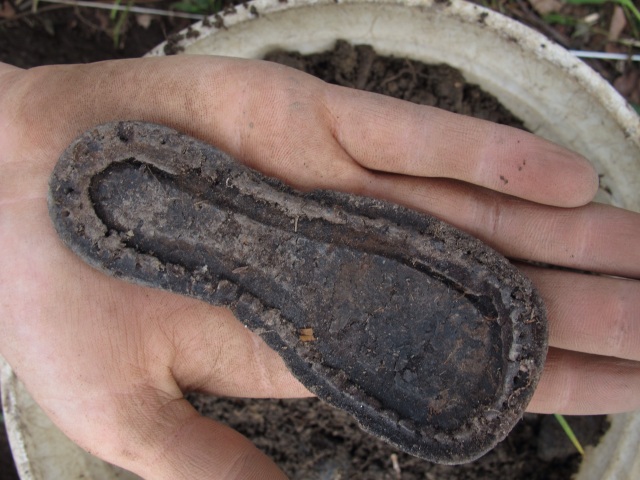
Shoe sole recovered from the site.
Coming Up
Beginning June 22nd, we will be having local high school students from Hazleton Area High School, the Hazleton Area Academy of Sciences, and the Hazleton Career Center joining us! We piloted this program last summer and had a wonderful response from the students. We are even more excited to be running it again this summer. Many thanks to Mrs. Billet, Mr. Anthony Conston, Ms. Marie Ernst, and Mr. Mike Pozzessere for their hard work in recruiting and encouraging these students to join us! This year we also received invaluable assistance from the University of Maryland’s College of Behavioral and Social Sciences to help us host these students. Special thanks to everyone involved in making this happen!
Eckley’s annual Patchtown Days Festival is taking place Saturday and Sunday, June 27th and 28th. There will be live music, traditional Irish dances, crafts for sale, and the best haluptkis around! We will have the excavations open and an opportunity for visitors to see what we’ve been recovering from the site. It promises to be a fun couple days, all while supporting a good cause. On behalf of myself, Dr. Shackel, and the Back Street Girls, we hope to see you there!
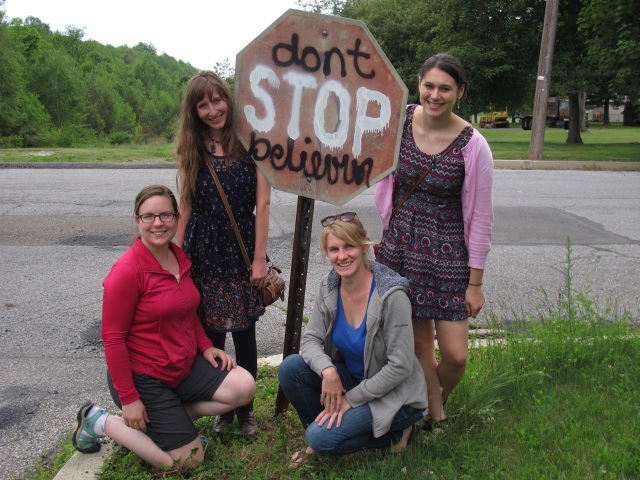
some of the Back Street Girls on a visit to abandoned Centralia, PA – the town that has continued to burn for about 40 years because of an underground, uncontrolled mine fire.


